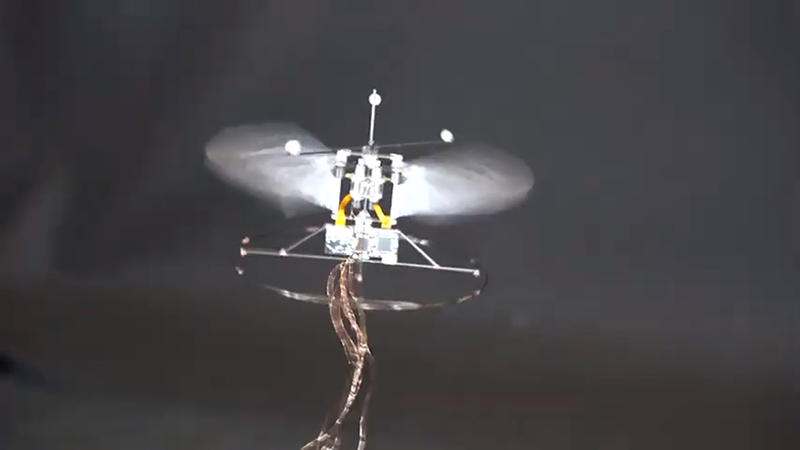Purdue’s Bio-Robotics lab has been working on a robotic hummingbird and, as you can see in the videos below, have had a lot of success. What’s more, is they’ve shared that success on GitHub. If you want to make a flapping-winged robot, this is definitely where you start.
 If you’ve ever watched a hummingbird, you know their flight capability is nothing short of spectacular. The Purdue robot flies in a similar fashion (although on a tether to get both power and control information) and relies on each wing having its own motor. The motors not only propel the wings but also act as sensors. For example, they can detect if a wing is damaged, has made contact with something, or has changed performance due to atmospheric conditions.
If you’ve ever watched a hummingbird, you know their flight capability is nothing short of spectacular. The Purdue robot flies in a similar fashion (although on a tether to get both power and control information) and relies on each wing having its own motor. The motors not only propel the wings but also act as sensors. For example, they can detect if a wing is damaged, has made contact with something, or has changed performance due to atmospheric conditions.
In addition to the tethered control system, the hummingbird requires a motion capture sensor external to itself and some machine learning. Researchers note that there is sufficient payload capacity to put batteries onboard and they would also need additional sensors to accomplish totally free flight. It is amazing when you realize that a real hummingbird manages all this with a little bitty brain.
The published code is in Python and is part of three presentations later this month at a technical conference (the IEEE International Conference on Robotics and Automation). If you don’t want to wait on the paper, there’s a post on IEEE Spectrum about the robotic beast, available now and that article contains preprint versions of the papers. The Python code does require a bit to run, so expect a significant flight computer.
The last hummingbird bot we saw was a spy. We’ve also seen robots that were like bees — sort of.















This is cool, but their use case is already solved by micro drones.
Sorry, let me correct myself–micro quads.
Thanks for that correction. The term “drone” always bothers me when used to describe a remotely operated flying machine. It tends to point to the uneducated when you see that term used.
Please hyphenate “use-case” unless you mean use an enclosure.
No?
https://en.wikipedia.org/wiki/Use_case
Hmm, didn’t Festo kind of preceded them with their RC dragonfly? I assume that Purdue’s achievement here is the obtaining of control with only two wings, because hovering hornitopthers are not particularly new otherwise.
150 years of Purdue, that explains it. That and graduation this weekend. Take Giant Steps. Go Boilers, as a few have this chilly and wet week.
https://hackaday.com/2019/05/12/robot-hummingbird-imitates-nature/
that’s nice, now get one to something important
Remarkable as it is, but would be beyond awesome without the tether.